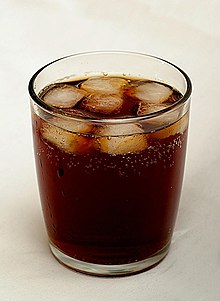**History and Evolution**:
– Soft drinks originated in the medieval Middle East with fruit-flavored drinks like sharbat.
– In Tudor England, water imperial and lemonade were early popular soft drinks.
– The Compagnie des Limonadiers in Paris had a monopoly on selling lemonade in the 17th century.
– Joseph Priestley’s discovery of carbonated water in 1767 was a major breakthrough.
– Inventors like Johann Jacob Schweppe and John Mervin Nooth further developed carbonated water production.
– Phosphate Soda emerged as a variant in the US in the late 1870s.
– Soft drinks transitioned from medical origins to mass consumption, with over 50 manufacturers in London by the 1840s.
– The invention of the Codd-neck bottle in 1872 improved sealing.
– Packaging innovations include the Crown Cork Bottle Seal patented in 1892 and the bottle-blowing machine in 1899.
**Types, Production, and Brands**:
– Soft drinks mainly consist of carbonated water and flavored syrup.
– Common types include lemon-lime drinks, orange soda, cola, grape soda, cream soda, ginger ale, and root beer.
– Soft drinks can contain caffeine, colorings, preservatives, and sweeteners.
– Brands like Schweppes, R. Whites Lemonade, Dr Pepper, Coca-Cola, Pepsi, Irn-Bru, Sprite, Fanta, 7 Up, and RC Cola are prominent.
– Production involves mixing ingredients with water and can be done at factories or at home.
– Carbonated water is often made using a soda siphon or dry ice.
– Soft drinks are available in various container formats like cans, glass bottles, and plastic bottles.
**Consumption and Market Trends**:
– Per capita soda consumption varies globally, with top consuming countries including Argentina, US, Chile, and Mexico.
– The US had higher consumption than the UK and Canada in 2014, but soda consumption has declined in the West since 1998.
– There has been an increase in soda consumption in some low/middle-income countries.
– Market control in the soft drink industry varies by country, with PepsiCo and Coca-Cola being top global producers.
– Health concerns related to over-consumption include obesity, hypertension, diabetes, and dental issues.
– There are conflicting studies on the impact of sugar-sweetened drinks on health.
**Health Impacts and Regulation**:
– Over-consumption of soft drinks is linked to obesity, hypertension, diabetes, and dental decay.
– Regular consumption of cola-based sodas is associated with lower bone mineral density in women.
– Some soft drinks have been found to contain benzene levels above safety guidelines.
– Soft drink consumption is associated with a 23% higher risk of kidney stones.
– Higher soft drink consumption is linked to mortality, circulatory, and digestive diseases.
– Government regulations and initiatives include debates on soda bans, sugary drink taxation, and the Healthy Hunger Free Kids Act of 2010.
**Global Initiatives and Public Health**:
– Global initiatives aim to curb soft drink consumption through increased prices on sugary fizzy drinks and taxes on sweetened products.
– Some countries like Saudi Arabia, UAE, and Bahrain have imposed taxes on soft and energy drinks.
– There have been attempted bans on soft drinks, such as NYC Mayor Bloomberg’s proposal to ban large non-diet soft drinks.
– The impact of soda bans on school availability and consumption has been studied, with varying results.
– Schools have taken steps like removing high-calorie soft drinks voluntarily and implementing minimum nutrition standards.
A soft drink (see § Terminology for other names) is any water-based flavored drink, usually but not necessarily carbonated, and typically including added sweetener. Flavors used can be natural or artificial. The sweetener may be a sugar, high-fructose corn syrup, fruit juice, a sugar substitute (in the case of diet sodas), or some combination of these. Soft drinks may also contain caffeine, colorings, preservatives and other ingredients.


Soft drinks are called "soft" in contrast with "hard" alcoholic drinks. Small amounts of alcohol may be present in a soft drink, but the alcohol content must be less than 0.5% of the total volume of the drink in many countries and localities if the drink is to be considered non-alcoholic. Types of soft drinks include lemon-lime drinks, orange soda, cola, grape soda, cream soda, ginger ale and root beer.
Soft drinks may be served cold, over ice cubes, or at room temperature. They are available in many container formats, including cans, glass bottles, and plastic bottles. Containers come in a variety of sizes, ranging from small bottles to large multi-liter containers. Soft drinks are widely available at fast food restaurants, movie theaters, convenience stores, casual-dining restaurants, dedicated soda stores, vending machines and bars from soda fountain machines.
Within a decade of the invention of carbonated water by Joseph Priestley in 1767, inventors in Britain and in Europe had used his concept to produce the drink in greater quantities. One such inventor, J. J. Schweppe, formed Schweppes in 1783 and began selling the world's first bottled soft drink. Soft drink brands founded in the 19th century include R. White's Lemonade in 1845, Dr Pepper in 1885 and Coca-Cola in 1886. Subsequent brands include Pepsi, Irn-Bru, Sprite, Fanta, 7 Up and RC Cola.
